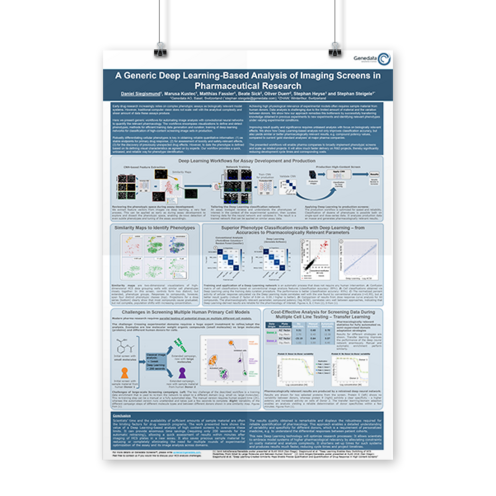A Generic Deep Learning-Based Analysis of Imaging Screens in Pharmaceutical Research
IEEE International Symposium on Biomedical Imaging (ISBI), Washington, D.C.
April 7, 2018
Early drug research increasingly relies on complex phenotypic assays as biologically relevant model systems. However, traditional computer vision doesn’t scale well with the analytical complexity and the sheer amount of data these assays produce.
In this talk we present the generic workflows for automating image analysis with convolutional neural networks to quantify the relevant pharmacology. The workflows encompass visualizations to define and detect phenotypes; methods for efficient training data generation and curation; training of deep learning networks for subsequent classification of high-content screening image sets in production. We illustrate its application in real-world pharma case studies and compare the time and expertise investment between this workflow and a traditional approach.
Robustly differentiating cellular phenotypes is key in obtaining reliable quantitative information: (1) as stable endpoints for primary drug response, (2) for assessment of toxicity and safety-relevant effects, (3) for the discovery of previously unexpected drug effects. However, to-date the phenotype is defined by an agreement between experts on its defining visual characteristics. Our workflow provides a quick, unbiased and reliable way for phenotype identification.
Achieving high physiological relevance of experimental models often requires sample material from human donors. Data analysis is challenging due to the limited amount of material and the variation between donors. We show how our approach remedies this bottleneck by successfully transferring knowledge obtained in previous experiments to new experiments and identifying relevant phenotypes under varying experimental conditions.
Improving result quality and significance requires unbiased analysis with focus on biologically relevant effects. We show how Deep Learning-based analysis not only improves classification accuracy, but also yields similar or better pharmacologically relevant results, e.g. compound potency values, compared to current ‘gold standard analyses’ at major pharma companies.
The presented workflows will enable pharma companies to broadly implement phenotypic screens and scale-up the related projects. It will allow a much faster delivery on R&D projects, thereby significantly reducing development cycle times and corresponding costs.
